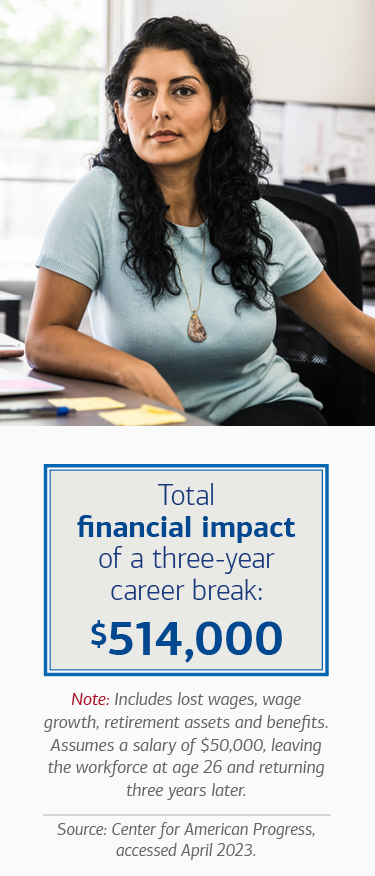Women: Rock your return to work after a career break!
Tips to help you plan your professional — and financial — comeback
“A comeback career can play a large role in shoring up your financial security.”
IF YOU’VE HIT PAUSE ON YOUR JOB, you’re hardly alone. About half of women report taking time away from the workforce, according to a recent Merrill study, “Women, Money, Confidence: A Lifelong Relationship,” with the average break lasting four years.1 Some may opt to stay home during their children’s early years or take time off to care for an aging parent; others may leave work as a result of illness or job loss.
No matter the reason for a career break, the financial impact can be significant. A woman who takes just a three-year break early in her career can leave more than half a million dollars on the table, due to lost wages and missed raises, a gap in saving for retirement and lower Social Security earnings.2 But there are steps you can take to recover.
When you’re ready to dive back into the workforce, “a comeback career can play a large role in shoring up your financial security,” says Jen Auerbach-Rodriguez, head of Strategic Growth Markets at Merrill Wealth Management. Follow the seven steps below to conduct your job search. After you’re hired, consult with a financial advisor to help you make the most of your salary and benefits to potentially boost your retirement savings.
Tap + to open
Choose your advisor in a more personalized way
All our advisors are committed to putting your needs and priorities first. Find some who match your personal preferences too.








